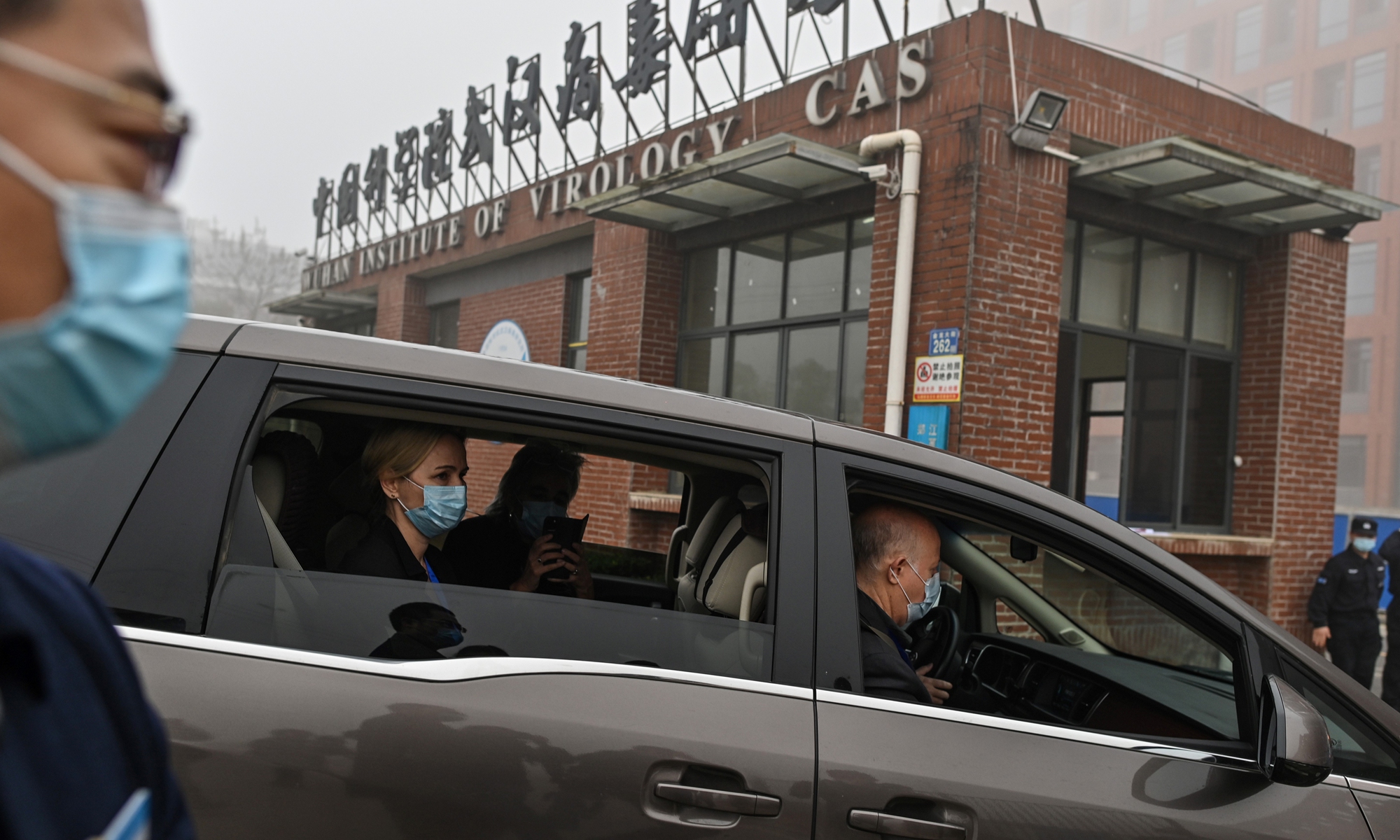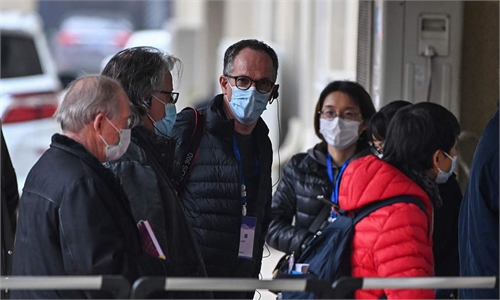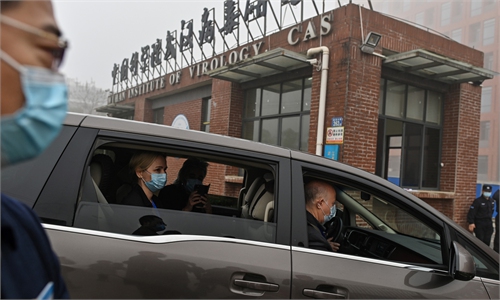COVID-19 transmission routes in Wuhan yet identified; virus may not be passed from bat to human; Huanan seafood market may not first place for outbreak: WHO mission

Peter Daszak (right) and other members of the World Health Organization (WHO) team investigating the origins of the COVID-19 arrive at the Wuhan Institute of Virology in Wuhan, Hubei Province on Wednesday. Photo: AFP
The discovery of the viral sequence of coronavirus suggests the virus originated from zoonotic transmission, but the host is yet to be identified. Sequence diversity appeared in the early Wuhan outbreak, suggesting that there are transmission chains beyond the Huanan seafood market, according to a report jointly published by experts from China and World Health Organization (WHO) on Tuesday.
There is no indication of the transmission of the novel coronavirus before December 2019 in Wuhan, Liang Wannian, a member of the WHO-China joint study team said at a press conference on Tuesday, noting that China and WHO joint investigation laid groundwork for coronavirus origins tracing elsewhere, and global tracing will not be limited to any location.
The joint team is comprised of 17 Chinese experts and 17 international experts from 10 other countries, and they conducted 28-day research in Wuhan, Liang said.
Report shows Wuhan Huanan seafood market acted as a focus for transmission, but transmissions occurred elsewhere in Wuhan at same time. But there is no evidence showing how the virus was introduced into Huanan seafood market, Liang said.
Huanan seafood market may not have been the first place for the COVID19 outbreak, as the first case that was registered on December 8, 2019 was not linked to Huanan seafood market, Liang said.
COVID-19 virus survives a long time at low temperatures and can be carried long distances; there are several stores at Huanan seafood market selling cold-chain products, but it's unknown how first case linking the market to stores sold these products, the official said.
Identifications of viral sequence showed bats and pangolin are not sufficiently similar to serve as the direct progenitor of the coronavirus. Bats and pangolin sample in Wuhan failed to indentify evidence of coronavirus and other samples from Chinese wild animals also failed to find related evidence, Liang said.
Since Wuhan is not a city where the environment is close to bat environment, therefore we tried other animals. Other animals could also contribute to the spread of the virus, said Peter Ben Embarek, a Swiss food safety scientist leading the WHO team, at the press conference.

WHO’s Wuhan tour seeks clues for COVID-19 origins. Graphic: Feng Qingyin/GT



